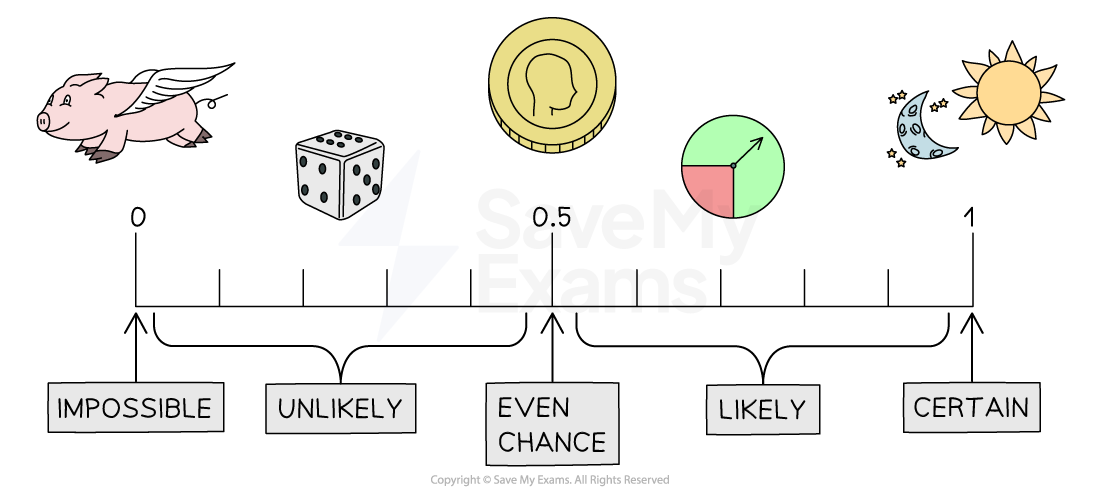Estimating Probability using Relative Frequency (College Board AP® Statistics): Study Guide
Probability language & notation
What are trials, outcomes and events?
Key term | Definition | Examples |
|---|---|---|
Trial | An experiment that can be repeated | Rolling a biased dice and recording the number it lands on |
Outcome | The result of a trial | The possible outcomes of rolling a standard six-sided dice are 1, 2, 3, 4, 5, and 6 |
Event | A collection of any number of outcomes, it could contain none, one or all of the outcomes |
|
What is probability?
Probability is the likelihood of an event occurring
Probability is given as a numerical value between 0 and 1
1 means the event will definitely occur
0 means the event will definitely not occur
The probability of an event
is denoted as
for any event

Relative frequency & the law of large numbers
How can probabilities be estimated?
If the actual probability of an event is unknown then it can be estimated using trials
The trials can be real-life observations or simulations
The probability is estimated by dividing the number of times an outcome in the event occurred by the total number of trials
This value is also called the relative frequency of the event or the empirical probability
Worked Example
A biased dice with faces labeled 1 to 6 is repeatedly rolled. The following table shows the number of times the dice landed on each face.
Label | 1 | 2 | 3 | 4 | 5 | 6 |
|---|---|---|---|---|---|---|
Frequency | 66 | 31 | 28 | 17 | 12 | 6 |
Find the relative frequency of the dice landing on a face labeled with a prime number.
Answer:
Identify the outcomes that are in the event
The event that the dice lands on a face labeled with a prime number contains the outcomes 2, 3 and 5
Find the number of times the dice landed on a face labeled with a prime number
Find the total number of times the dice was rolled
Find the relative frequency by the number of times the dice landed on a face labeled with a prime number by the total number of times the dice was rolled
The relative frequency of the dice landing on a face labeled with a prime number is 0.44375
What is the law of large numbers?
The law of large numbers states that
as the number of trials increases
the relative frequency of an event tends to get closer to the actual probability of the event
One way to improve the estimate for a probability is to use more trials
Worked Example
Kai is investigating the probability that a surfer falls off their surfboard in Pe'ahi, Hawaii, during a big wave. Kai calculates the relative frequency for different numbers of attempts.
Number of attempts | 10 | 100 | 200 | 500 |
|---|---|---|---|---|
Relative frequency | 0.4 | 0.32 | 0.35 | 0.34 |
Which relative frequency is most likely to be the best estimate for the probability that a surfer falls off their surfboard during a big wave?
(A) 0.4
(B) 0.32
(C) 0.32
(D) 0.34
Answer:
The law of large numbers states that the relative frequency with the highest number of trials is most likely to be the best estimate for the probability
The correct answer is D

You've read 0 of your 5 free study guides this week
Unlock more, it's free!
Did this page help you?